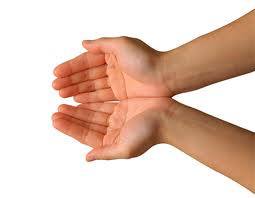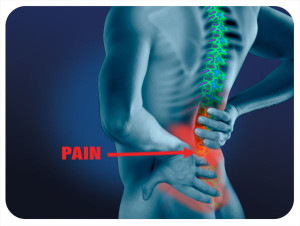
by SharonHartnett | Nov 29, 2015 | Craniosacral Therapy, Energy Healing, healing, healthy, Healthy Body, Massage, Massage License in Ohio: 33.007505-H-K, Structural Integration
Should you come in for a massage when you are experiencing a flu or cold this season?
I love working with my clients. Truly I do. My work and the people I touch bring so much light into my world. But I am always astonished that some of them come into the intimate setting of the massage room with either a full blown cold or flu. I know they need some TLC. But the massage table is not the best place to get it. Especially with COVID still present. It’s important to remember that your massage therapist LMT can get sick. But not only that, everyone she/he touches or who breaths in or comes into contact with a live virus is prone to catch the same thing with enough exposure.
Some of the symptoms to look for are:
Cold:
- stuff or runny nose
- sneezing
- cough
- eyes watering
- fatigue
- headache
- light fever
- congestion
Flu:
- stuffy and/or runny nose
- headache
- weakness
- fatigue
- dry cough
- fever
- congestion
- body aches and pains
Colds tend to be milder. They also seem to be much short lived.
For more information on colds and flu check out: Colds and the Flu
The best thing you can do is to rest, and take good care of yourself and others with plenty of sleep, and/or speaking with your physician. Also- just so you know, sometimes massage can aggravate your illness if too much activation is going on in your body systems. Not to mention, I think I have read that some Chicken noodle soup can really help to!
Don’t be afraid to cancel if you are sick:). Since I wrote this post, I have switched away from massage to Craniosacral Therapy. COVID has had a big impact on many so please be mindful of resting and taking care of yourself, as well as keeping others healthy!
Sharon Hartnett CST-D
703 509-1792
www.craniosacraltherapistcolumbus.com

by SharonHartnett | Oct 20, 2015 | craniosacral, Craniosacral Therapy, Massage License in Ohio: 33.007505-H-K, mind body & spirit, Structural Integration, thought for the day
I am not going to get into the physiology of Craniosacral, but rather focus on the experience.
When one thinks about life, there are absolutes and there are relative positions.
Absolutes are either all or nothing. It’s not easy for us to live in absolutes. From childhood, we are taught to identify different things with language. Each thing we name has shades of interpretation. It gives us a way to communicate verbally. It helps our cognitive thinking to grow and expand. Yet our spoken language can be so limiting. Have you ever wanted to write something about an eloquent moment or something that felt rich and sensory, but there just was no way to explain it to another?
When we become aware of our observation while it is watching, we can start to unravel everything that we have learned. Forms and shapes lose the meaning we have placed upon them, and we get to see with fresh eyes. Even deeper than that, we can uncover our true essence as we let go of our stories or attachment to what the outer physical world means to us. Our relative thinking disappears and we unearth a truer joy that it the best word I can find to describe out true selves. Where everything is One, that is the only Absolute. And even this explanation is encased in words.
I have found that as a Craniosacral Therapist that I dance with my clients in the quiet experiences of contact between the nervous systems and all the interconnection dialogue that takes place in a moment, and then in another. The endless thinking patterns can come to a stop and there is a feeling of being present and more fully alive. This doesn’t mean that our histories stop showing up, but we are aware of the “now” and can let those pass by without abuse, suffering or pain more and more as we become attuned to this type of living. The energy that has been trapped and kept in chaos comes into order. SomatoEmotional Release , in particular, is a process that allows our stories to pass through the moment as it clears to completion. More advanced practitioners are well versed in holding space and techniques for this to occur as the mind, body and spirit come together for integration.
Often with Craniosacral, I find that sensitive people are drawn to it. This is because they are experts at tracking their sensations and expression of self. Most of my clients who initially respond to Craniosacral Therapy will feel a lot on the table and walk away feeling great with new understanding. However, I also have clients who prefer deeper myofascial therapy work. I love the fascia, so I am happy to oblige with some Structural Integration or whatever they need. However, as they begin to feel more deeply into their body’s, they too begin to bring awareness to the subtle and find the benefits to such work. In most cases, it is helpful to work deeply at times, and range to the gentle sweet touch of Craniosacral too.
Life is about learning about our relative perspectives, but ultimately to be free, we must let go of the mind to feel and sense deeply as well. So whichever type of touch brings you to a greater awareness, jump into the dance. Feel it all. Wake up to your: touch, sounds, waves, melodies, sights and tastes. Find your fullness and feel the emptiness. Life is for the living and it’s all here.

Craniosacral Columbus
I have found that Craniosacral is a very enlivening type of therapy that revitalizes and evokes the deeper happenings of the soul.
FAQ Page
Sharon Hartnett CST-D
Worthington, Ohio|Serving the Columbus Area
614 653-8111
To find out more about Craniosacral Therapy, check out my main page.

by SharonHartnett | Aug 30, 2015 | craniosacral, Craniosacral Therapy, Massage, Massage License in Ohio: 33.007505-H-K, mind body & spirit, Structural Integration
By learning to breathing well, people can learn how to calm themselves and feel more energized.
Many people who often feel stressed or anxious are prone to holding their breath. When this becomes an unconscious pattern, the movement around the ribcage can become dehydrated and stuck. This is unhealthy because it can impair physiological functioning of the body. The good news is that this can change!
By bringing mindfulness to your breathing throughout the day, you might find yourself surprised as to how often you stop breathing. At the same time, by just bringing your awareness to the breath and how the chest moves, you can improve things by learning about yourself and how you are internally organized. So mindfulness is a great beginning to understand the relationship between breathing and stress.
If you want to further let go of any restrictions around the upper chest and diaphragm, then getting some good therapeutic myofascial therapy can do wonders. The web of fascia that surrounds your body and envelopes all the individual organs, muscles, bones and other parts of your body can be restored back to health. Specifically, the areas that need to be released in order to enhanced breathing health are the neck, thoracic diaphragm, intercostal back muscles, abdomen and chest. Lengthening and opening up these areas can help you to live with more ease.

Breath easier with Massage
Often when I work with my clients, I like to introduce them to a breathing meditation during the session. This has shown to be quite helpful in helping clients to relax, especially while working to let go of the adhesions or tight holding. Starting with helping broad areas to soften and release, and then, releasing ribs and bones-clients are amazed at how much more space they discover to breath. In addition, by working with SomatoEmotional Release techniques, clients will feel things like fear letting go as the parasympathetic system starts to bring more calm after the initial wave.
Get in touch with your body sense to heal. Your body knows what it needs and will show the way to any massage therapist who knows how to listen well.
Sharon Hartnett CST, LMT, SI, BHSP
740 966-5153
Columbus, Ohio
www.massageincolumbusohio.com

by SharonHartnett | Aug 17, 2015 | Massage License in Ohio: 33.007505-H-K, Structural Integration
Avoiding your pain at all costs?
My guess is that most people would prefer not to feel their pain. It makes sense though, doesn’t it? Who would want to feel pain? Perhaps-that’s why we have so many defense mechanisms in place to supposedly protect us. We are like walking miracles where much of our pain is suppressed…. until it resurfaces or is found out!

Feeling Deeply into Pain to Heal
When people come in for a massage at my office, they are usually feeling some type of discomfort or pain that continues to call for attention. I often hear about chronic pain that doesn’t resolve and the stress and sleep deprivation that makes things even worst. My clients biggest wish is they would like to feel better. Yet, it’s hard to do this alone when we have learned to avoid our pain. Whether you go to a Massage Therapist, a Psychotherapist, a Chiropractor, whoever, it’s good to receive help from another perspective. You may not find the solution up front, but if you stay with it, and trust your own inner sense to guide you, you will get help that best suits your individual needs.
As a licensed Massage Therapist for 18 years, my observation after working with many clients, is that the truth is that the longer we are organized against feeling the “soft” pain, all the energy that is kept in protection to support this dynamic, starts to lose it ability to keep us separated from the pain. Eventually, the pain seeps through and one symptom start to show up, and another and another. Pain is only meant to be temporary to let us know when we are in real danger. Afterwards, we need to learn to shake it off or process it efficiently.
When I first started working, I was drawn toward Structural Integration Work, developed by Dr. Ida Rolf. When I received my first 10 sessions of this myofascial therapy, I felt great. In my thinking and experience, working with fascia became key to gaining a sense of wellbeing. Working with releasing dysfunctional fascial patterns has helped many of my clients release pain and find better posture. Then I found myself attracted to Energy Therapy. I know this sounds far out to many people, but in fact everything is made out of energy. Some people are born with a gift to perceive it and work with healing, and others can learn this. So I attended the Barbara Brennan School to study Brennan Healing Science. While there, I learned that soft pain was held in the Human Energy Field. There are many tools a “healer” can use to facilitate healing this way: clearing energy, charging the field, helping clients to awaken to their “Inner Wisdom”. As with most Massage Therapists, I went on to study another course to study “Hakomi” to add to my toolbox. Most of my class mates were Social Workers, Psychotherapists and such, but I enjoyed learning new and deeper skills to help people with emotional pain based on beliefs that were long held. Hakomi is an organic and gentle type of therapy that is kind and organic. The compassionate standpoint of this work has helped my clients try new things without any judgment or harshness. My last great passion was to study at the Upledger Institute, to gain a more extensive understanding of how to work with the brain, the Craniosacral System, and SomatoEmotional Release. With all of this and more said and done, what I have realized is that people have unique make-ups of how they run their living patterns. When they become stuck on one level, if it is not able to be cleared, pain stays in that system. So if someone truly wants to heal, they need to meet that place of suffering and/or pain with an open heart and a willingness to feel the “soft” pain in order to transform it.
Loving our pain is not a new concept, but I suppose most people might not have thought about it this way. All things are derived from Love. Our defenses only kick in because something is painful in the moment and we did not find a way to complete itself. Yet the mind, body, spirit connection is always waiting to complete itself into the next cycle of growth. So whether you come in and need deep fascial or muscle work, or light touch, give yourself a chance to work with a therapist long-term to explore your relationship to pain and finding ways to release it. In my opinion, the easiest way to feel good is to acknowledge what is present and feel it at your comfort level until the patterns dissolve. Using a SomatoEmotional approach can be very telling, as the body is always dialoguing what it needs, if we only listen and respect what is communicated.
Sometimes, during a first session, even after all this time, I am not spot-on, but I do learn something with every touch, sound, and exchange. I gain knowledge and compassion for the highest good of my clients on my table. So we try many different approaches to resolving pain issues, and happily I can say that I have seen many clients leave my office astounded by how much better they feel. But it’s important to remember that if you are just off the table, the endorphins will wear off, but if you stay with the clarity, staying committed to the work that is needed, and the homework that your MT’s give you, the long-term result are quite possible.
Remember: Love your pain because it is telling you something needs to be addressed. Something deeper than you probably know.
Imagine your life if you stopped thinking pain was “bad’ and learned to flow and dance with it in life.
It might actually change into something special!
Sharon Hartnett LMT
740 966-5153
www.massageincolumbusohio.com

by SharonHartnett | Aug 9, 2015 | Structural Integration
Low Back Pain is a Common Problem
In the current AMTA Massage Therapy Journal, it states that, “Generally speaking about 80 percent of the adults ages 30-60 in the United States have reported suffering from lower back pain at some time in their lives. According to the National Institutes of Health, its is a leading contributor to missed work days and job-related disability.”
On a positive note, low back pain can often be alleviated if dealt with proactively or in the early stages.

low back pain relieved with massage
Some of the best things you can do is to improve your posture. Here are a few ideas:
- While I have studied and practice various modalities of body and healing work, I find the best results for performance enhancement and pain relief such as with low back pain with Rolfing types of Work called Structural Integration (SI). Structural Integration works with both dysfunctional patterns in the fascia and gravity to bring the body back into healthy alignment. During the ten sessions, I work with different areas of the body, until I help the client find their structural integrity so that they can move in better balance, more length, and with more vitality through life. However, if someone is have an acute low back pain issue, we can often see great pain relief in just one session.
- One of the best things you can do for posture is to exercise. Yoga, Pilates and other types of sport can build and strengthen core connection and flexibility. However, it’s important to know that you want to go for symmetry and length in the body as a target.
- If you are working seated most of the day, take a few moments every 1/2 hour or so and stand and stretch.
- While you sit, imagine doing so with a tall straight, but flexible spine. Imagine a sting pulling the top of your head up.
- Keep your feet on the floor when you sit.
- When you stand allow your shoulders to pull back but relaxed.
- Keep your knees soft.
- Tuck your lower anterior ribs in.
- Practice pelvic tilts.
- Lie on your back with knees up and explore your feet connection from the balls of your foot to the heel. Body awareness!
- When you sleep on your side, put a pillow between your legs.
- Sleeping on your side is better than sleeping on your belly for low back pain.
- Doing the Cat-Cow and Cobra Yoga exercise daily can be great for low back pain too!
- General Massage can help with muscle aches, tenderness or spasms. Also with stiffness and lack of mobility.
Low Back pain can be helped by becoming proactive in your life. However, if the pain is extreme-make sure you don’t ignore it.
Call your physician for an appointment:
The majority of herniated disc problems occur between L4 and L5. If you are feeling any tingling, numbness or weakness, this may be more than a soft tissue issue. While massage is usually still very helpful, you may want to contact your doctor and let him/her know that you are experiencing these symptoms.
Sharon Hartnett CST, SI, LMT
Columbus, Ohio 740 966-5153
by SharonHartnett | Aug 6, 2015 | craniosacral, Massage, Structural Integration
Love with Mindful Contact is the Best Healer for Trauma
Trauma can start young. Children are naturally trusting and they have basic needs. They look to adults for acceptance, love, nourishment and so much more so that they can grow and thrive in this world.
Yet statistics say that child abuse is reported every 10 seconds.
In most cases, children adapt and survive many cases of abuse and trauma, but that doesn’t mean that the mind and body have processed the whole experience/s.
So as adults, often in a trusting massage relationship, emotions and sensations come up as the body eventually reveals old patterns that may have developed as a trauma defensive reaction. Traumas can include something like falling off a bike as a child, being scared by a loud argument, re-occurring abandonment situations or being terrorized by an event.
Most people have touched into some type of trauma whether small or life impacting and developed strategies to cope with life without being fully aware. But through a series of mindful Craniosacral Therapy or other types of bodywork- the body’s own intelligence can set the pace for healing. Not only in the body, but the sensory information is related to the brain as well to restore balance.
Opening the human heart through gentle contact to heal past trauma.
Craniosacral Therapy
Sharon Hartnett LMT, and Certified Advanced Craniosacral Therapist has trained to work with trauma at the Sensorimotor Psychotherapy Institute, the Hakomi Institute, and the Upledger Institute to understand how the body holds and can release trauma in a safe and comfortable environment. She has worked with soldiers, victims of rape, neglected children and adults who face physical challenges due to accidents in their childhood.
In the Craniosacral Therapy sessions, licensed counseling is not provided , but what does happens is that dialogue can help the process open up. As the younger “child consciousness” shows up organically, support and love are held without judgment. When the younger energy is acknowledged, accepted, cared for, and allowed to feel deeply in the body, often the process is able to complete and no longer circulates as anxiety and reactionary systems anymore.
Sometimes, when talk therapy doesn’t help with a physical challenge, going to a trained Craniosacral Therapist CST, who trained in ethics and in holding a compassionate container to support their clients in this process, will be the way through. When no other avenues have helped you to integrate, the body intelligence may be able to complete your healing through the mind, body, and spirit connection.
It’s important to say that this is more of a self educational type of session as Craniosacral Therapists are not necessarily licensed psychologists or such. The Craniosacral Sessions are one of Self-Discovery that has helped many to find inner peace and love.
All information shared during sessions is confidential.
For more information, contact Sharon Hartnett CST-d in Columbus, Ohio
703 509-1792
www.craniosacraltherapistcolumbus.com






